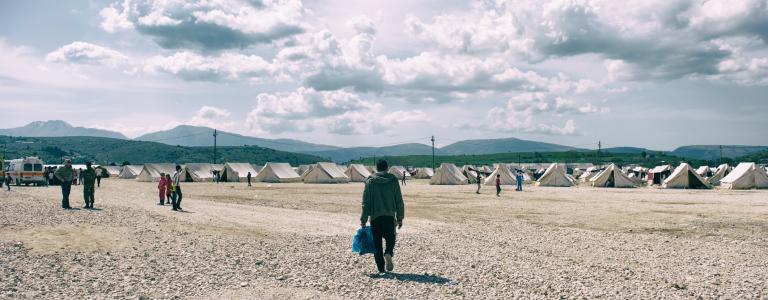How Can the G20 Effectively Address Migration?
We make the case for how the upcoming G20 summit's core focus—how to strengthen economic resilience and further integrate global financial markets—can help address both hunger and migration.
Addressing poverty, hunger and the current refugee crisis are among the stated priorities for the G20 summit that will convene in Hamburg, Germany on July 7–8, 2017.
Our research has found that the meeting’s core focus—how to strengthen economic resilience and further integrate global financial markets—can help address both hunger and migration.
IISD and the International Food Policy Research Institute (IFPRI) conducted an econometric analysis to assess how international migration is affected by economic growth, hunger and increased agricultural productivity. The goal was to determine whether investments to reduce hunger had any impact on migration levels.
Close to 90 million people migrated from their country of birth between 1990 and 2015.[1] There was a significant acceleration in migration from 2005 to 2010. The number of migrants from Africa and the Middle East more than doubled when comparing the period from 2000–2005 to the period of 2010–2015.
We analyzed changes in these migration flows and measured the impact of three variables: hunger levels, agricultural productivity and per capital gross domestic product (GDP.)
Our research has found that the meeting’s core focus—how to strengthen economic resilience and further integrate global financial markets—can help address both hunger and migration.
We found that economic growth was the strongest driver for lowering levels of migration, both at a global level and in Africa. In most cases, the African countries that experienced an increase in GDP of more than 25 per cent saw an absolute decrease in the number of migrants. In countries with no or very little increase in GDP there was increased migration.
We found no discernible relationship between hunger levels and migration after controlling for economic development and political stability, two key drivers for food security. This is a significant finding since it means that solving the hunger problem alone will not directly impact international migration. Instead, it depends on how we invest in reducing hunger and how multiple drivers are addressed.
Close to 90 million people migrated from their country of birth between 1990 and 2015.
We also found no discernible relationship between increased agricultural productivity (measured in terms of value of production at the farm level or in physical yields) and migration. In fact, increased productivity can actual lead to increased migration because less labour is required on farms.
The three findings together are important. They unlock the answer to the mix of interventions needed to simultaneously end hunger and provide economic opportunities for people in their country of birth. Focusing on a few SDG 2 targets in isolation, such as reducing hunger or increasing agricultural productivity, will not reduce migration levels. The key is to link investments in reducing hunger and increasing productivity to broader economic growth. In other words, it is critical to generate enough economic opportunities to enable people to remain in their country of birth.
We conclude that donors should focus on investing in agriculture and food systems beyond the farm level. Transforming agriculture along the whole value chain, improving market integration and developing rural economies are key to addressing migration. Global leaders gathering for the July 2017 G20 meeting should incorporate this integrated focus into their deliberations and follow-up actions.
[1] Based on the available data from the World Bank and United Nations, Department of Economic and Social Affairs (UN DESA)
You might also be interested in
Nine Wins for Sustainable Development in 2024
Looking back on 2024, let’s take a moment to pause and appreciate the positive milestones of the year. Join us in celebrating the small and big wins for global sustainability.
The Cost of Fossil Fuel Reliance
Government support for fossil fuels reached at least USD 1.5 trillion in 2023, new data shows.
Commission must stop Energy Charter Treaty hijacking EU climate policy
The Energy Charter Treaty allows fossil fuel investors to sue EU member states before international arbitral tribunals to challenge climate mitigation measures. This legal mechanism is increasingly weaponized by the industry, IISD's Lukas Schaugg writes.
Increased Support Needed to Achieve India's Clean Energy Goals
India is on track to achieve many of its 2030 clean energy goals but needs to step up government support measures to accelerate the deployment of offshore wind, electric vehicles, and green hydrogen, according to a new report.
